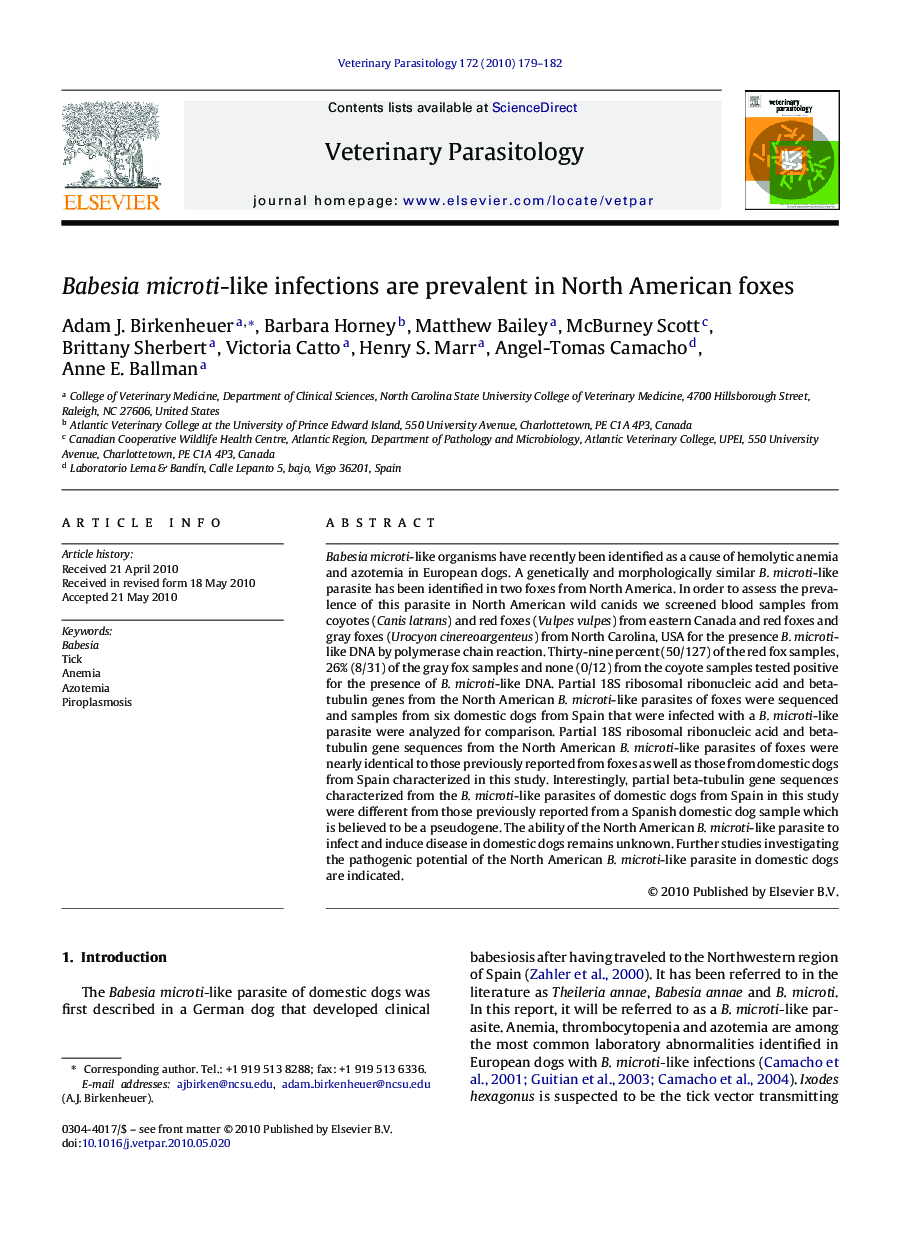| Article ID | Journal | Published Year | Pages | File Type |
|---|---|---|---|---|
| 2470385 | Veterinary Parasitology | 2010 | 4 Pages |
Babesia microti-like organisms have recently been identified as a cause of hemolytic anemia and azotemia in European dogs. A genetically and morphologically similar B. microti-like parasite has been identified in two foxes from North America. In order to assess the prevalence of this parasite in North American wild canids we screened blood samples from coyotes (Canis latrans) and red foxes (Vulpes vulpes) from eastern Canada and red foxes and gray foxes (Urocyon cinereoargenteus) from North Carolina, USA for the presence B. microti-like DNA by polymerase chain reaction. Thirty-nine percent (50/127) of the red fox samples, 26% (8/31) of the gray fox samples and none (0/12) from the coyote samples tested positive for the presence of B. microti-like DNA. Partial 18S ribosomal ribonucleic acid and beta-tubulin genes from the North American B. microti-like parasites of foxes were sequenced and samples from six domestic dogs from Spain that were infected with a B. microti-like parasite were analyzed for comparison. Partial 18S ribosomal ribonucleic acid and beta-tubulin gene sequences from the North American B. microti-like parasites of foxes were nearly identical to those previously reported from foxes as well as those from domestic dogs from Spain characterized in this study. Interestingly, partial beta-tubulin gene sequences characterized from the B. microti-like parasites of domestic dogs from Spain in this study were different from those previously reported from a Spanish domestic dog sample which is believed to be a pseudogene. The ability of the North American B. microti-like parasite to infect and induce disease in domestic dogs remains unknown. Further studies investigating the pathogenic potential of the North American B. microti-like parasite in domestic dogs are indicated.
